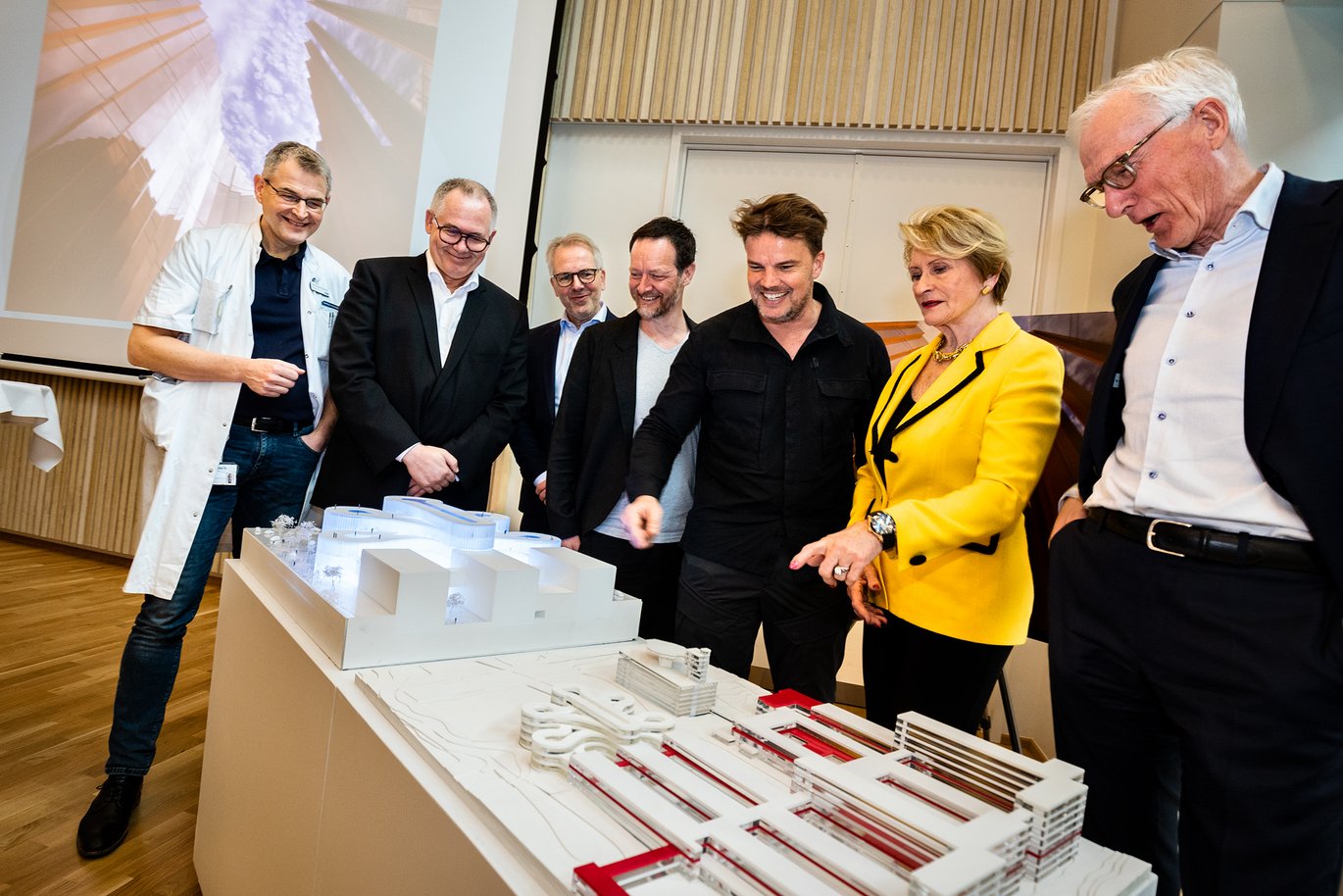Aarhus aims to create world class treatment of brain disease
Aarhus University and Aarhus University Hospital are world-renowned for their contributions to diagnosis and treatment of brain diseases, and with a new iconic building by the Bjarke Ingels Group (BIG), they will bring psychiatry and neuroscience research together under the same roof at the Danish Neuroscience Centre (DNC).

One in five Danes are affected by some form of disease in the brain. This costs DKK 39 billion annually in admissions, home care and medical treatments. With the iconic new building, designed by the Bjarke Ingels Group, DNC will bring together the world's leading brain researchers and form the basis for the next big breakthrough in the treatment of brain diseases. The building will connect brain researchers across academic disciplines – with the central emphasis on neurology and psychiatry.
The architecture is inspired by the anatomical shape of the folds in the brain, and will enable clinicians, researchers, patients and relatives with different backgrounds to form new collaborations and connections, in the same way as the brain makes connections.
Destigmatisation of psychiatric illness
DNC has a goal of breaking down the division between physical and psychiatric diseases of the brain and in this way destigmatising psychiatric disorders. Brain research can help explain the underlying cause of some of psychiatry's treatments for depression, for example magnetic stimulation of the brain or electroconvulsive therapy.
"With the support of the Salling Foundations, the Danish Neuroscience Centre’s new building is a big step towards the optimal framework for advancing further in the international elite within neuroscience to create a foundation for new ground-breaking treatments for our patients with diseases in the brain, spinal cord and nerves as well as psychiatric disorders," says Jens Christian Hedemann Sørensen, professor of neurosurgery and chair of DNC, before continuing:
"The idea is for the building, like the brain, to function as a space for networking that creates new connections, contexts and shared understanding. We wish to put a stop to the perception of physical and psychiatric brain diseases as isolated from one another.
The location between AUH and AUH Psychiatry and the design of the building both promote and underline this approach.”
BIG’s architecture is inspired by the brain
It is precisely the brain's amazing ability to gather and connect knowledge that has inspired the Bjarke Ingels Group's design. The architecture of the building reflects the folds which are characteristic of the brain, and which provide as many interfaces as possible in limited space.
Bjarke Ingels, founding partner at BIG, explains the idea for the architecture:
“The brain is the most complex and adaptable organ in the body. With its architecture, our design for the new Neuroscience Centre replicates the essential principle in the brain – namely the folds of the brain, which here give the hospital a large surface area in limited space. The folds are used to create connections, and to bring light and the surrounding green landscape into the hospital through 'green pockets'. This will inspire patients, visitors and employees to go outside and enjoy some fresh air and allow nature and biodiversity to become part of the research and healing process.”
Connections to the surrounding society
There will also be a connection to the general public. In a centrally located exploratorium, the research centre will present exhibits and presentations on the latest developments in the field of brain research. The centre will thus be a place where knowledge, research and popular research communication about the diseases of the brain is created – and a place in the hospital where you do not need to be a patient or a relative to be invited inside. The Danish Neuroscience Centre has already produced results that have led to new treatments around the world. Now the general public will also be able to get a closeup of where this happens.
Support from the Salling Foundations
The Danish Neuroscience Centre is exclusively financed by donations.
The Salling Foundations view the DNC project as visionary and of great potential, and have therefore declared that they will grant funding of DKK 250 million to the coming Danish Neuroscience Centre. Chair of the board of the foundation Jens Bjerg Sørensen explains the foundation's support for the building, which will be a new architectural landmark for Aarhus:
"We see the Danish Neuroscience Centre as a unique opportunity to emphasise the position which Aarhus has globally within research into brain diseases. Our foundation has had some very interesting meetings with the hospital management about the development of new and improved opportunities for diagnosis and treatment which will benefit the patients. The building will undoubtedly be a landmark in Aarhus in the form of the Bjarke Ingels Group's architecture, which will come to provide the space needed for world-class research.”
DNC background
The Danish Neuroscience Centre was established in 2009 by the Central Denmark Region and Aarhus University. The centre has grown too big for its current location and is therefore relocating to a new building located between AUH Psychiatry and AUH in Skejby, Aarhus. The new building will provide the framework for new breakthroughs for the diagnosis and treatment of diseases of the brain.
The Bjarke Ingels Group has designed the building based on the structure of the brain and its ability to form connections.
The building will total approx. 19,000 square metres and is expected to be completed in 2026. It will have room for approximately 500 researchers.
The Danish Neuroscience Centre was founded on the basis of donations.